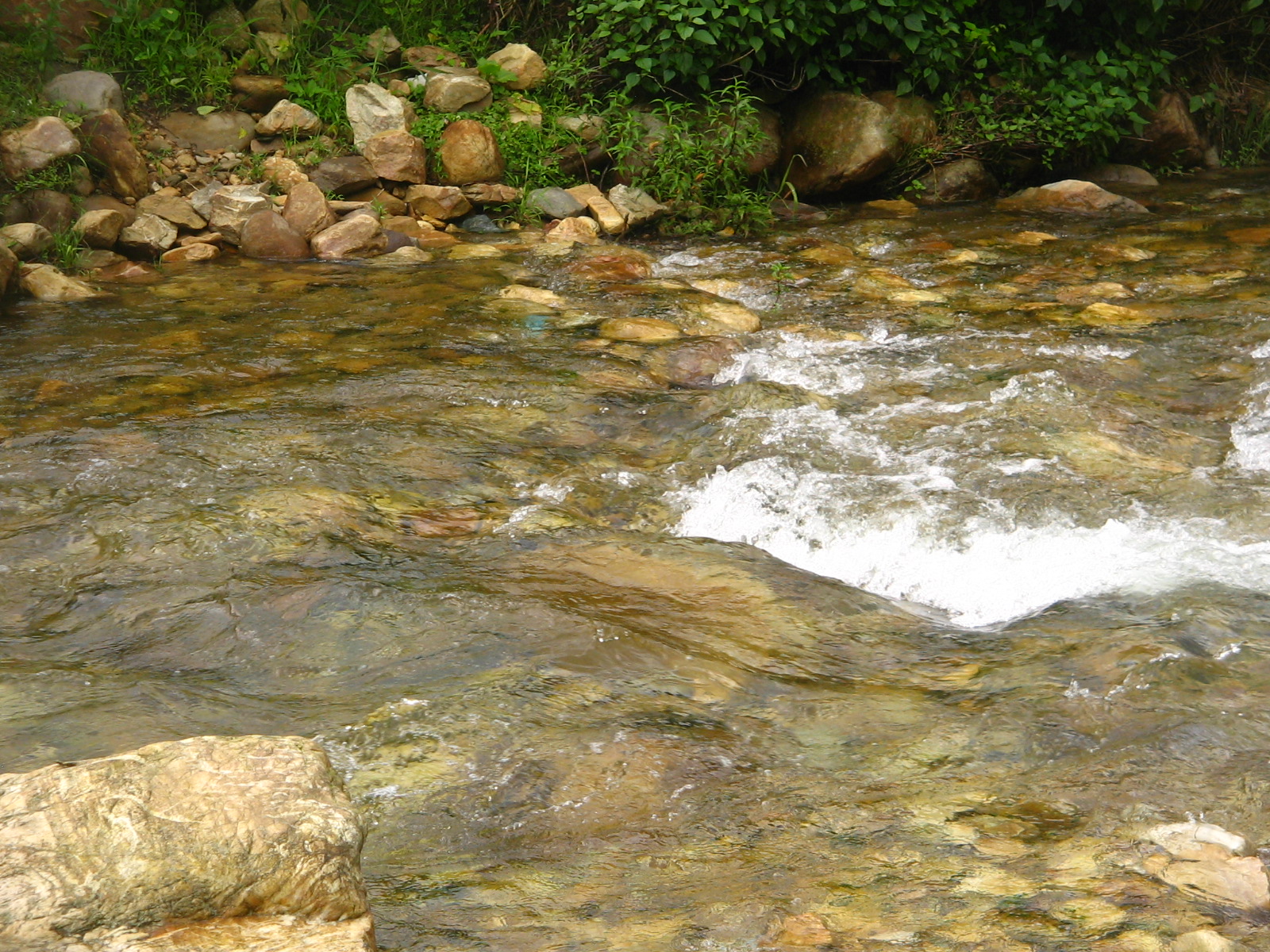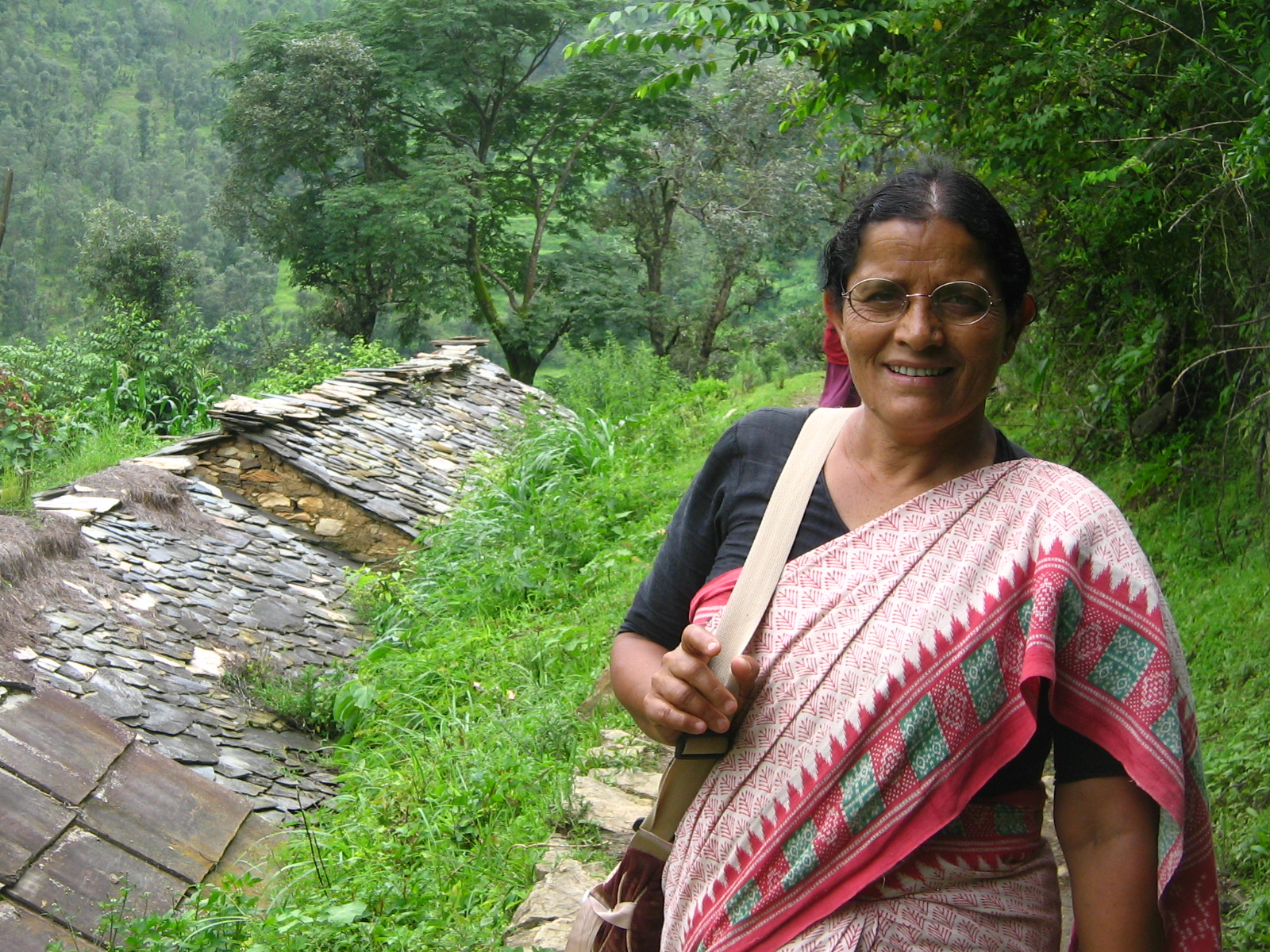Guest post by: Chicu
The Kosi river in Uttarakhand is the lifeline for the areas it flows through. However, now the demands on its water are increasing. Supply of water to army cantonments and to cities has severely depleted its flows. The forests and villages that it nourished are now starved of water by urban thirst. But this story proves that villagers are more than passive victims. Once, they contributed to the problem by indiscriminate use of natural resources. Today they are its proud protectors. Their inspiration is a tireless and committed woman. This is her story- and the river's too.

The teacher: When the Lakshmi Ashram began opening balwadis across the district, she went there to teach. Just 30 years ago, and child marriage was still rampant in the area. Girls as young as 15 would come to the schools, but not for themselves; they would come to drop off their children. Lakshmi Ashram started off with 25-30 such schools, When Anil Bordiya, the then education secretary praised their work and declared that such activities should be throughout the state, this gave a further fillip to girl’s education. Hearing of her work, her father praised her. Despite the low salary, he supported her work and acknowledged its importance.
The social worker: Basanti continued to work with schools and Mahila Sanghatans. For a few years, she worked in Dehradun, but her love for the mountains was hard to resist. She returned to Kausani in 2002, determined to work in the mountains for ‘jal, jungle, jameen’. A big task, and she confessed to the author that she did not know where to begin. She was undaunted however, and started her work in the most basic fashion. She first got a friend-Parvati Goswami to show her the roads to the various villages.
The activist: In 2003, she read an article in Amar Ujala that spoke about the effect of deforestation on rivers. It stated that, ‘If the cutting of forests and the spread of forest fires is not stopped the Kosi will die in 10 years.’ That spurred Basanti into immediate action. Despite the popular opinion that the women in the mountains would never listen to her, she persisted. She would follow the women to where they were cutting wood and show them the article. A few years ago, there had been conflict over water when there was a drought and the police had not allowed the villagers to use water for irrigation. She referred to that and asked them what their alternatives were if the Kosi were to dry up. The women admitted that they did not have any real options and also stated that they had never earlier made the connection between forests and water.

Basanti behen (Photo: Chicu)
The negotiator: Basanti behen convinced the women in the valley to form community based organizations to conserve their forest. People agreed to refrain from cutting live wood, especially oak. The women also began to keep a watch on their forests. Initially they received a lot of opposition from the men, and also from the forest guards. With Basanti behen’s encouragement, the women entered into an agreement with the forest officials. According to this,
- Neither the forest department nor the villagers cut wood
- The forest department recognizes the villagers’ right over dry wood.
At that time, there was a lot of antagonism against the forest department, and any attempt at arriving at an agreement was seen as ‘siding with the forest officials’. Basanti convinced the villagers that the forest belongs to them, and not to the government, and that they have a responsibility to protect it. Gradually, the villagers accepted this viewpoint and began fighting forest fires and conserving the forest.

Watershed of the Kosi. Compare the dense young growth with the sparse older forest (Photo: Chicu)
The results: It is only in the last couple of years that the forest department has begun active afforestation in the area. For the last decade, the only conservation measures were a ban on chopping of green wood and a prevention of forest fires. The ecosystem has responded magnificently to this protection.
- Forests: Where there were sparse pine forests, now broad-leaved trees are coming back in. The forest floor has saplings of rhododendron (buraansh), oak (banj), and myrica nagi (kaafal). All this through natural regeneration.
- Water: Seasonal naulas (springs) are now flowing throughout the year. The naulas at Rauliyan and at Kaphadi would dry up in the summer. For the last couple of years, they are perennial.
- People: Acknowledging that they are the stewards of their ecosystem and working towards its protection has vastly increased the social capital in the area. Today, the Mahila Sanghatan where Basanti behen works is actively involved in the gram panchayats. It is in this area that women sarpanches are far more than a token nod to equal representation.
/articles/basanti-and-kosi-how-one-woman-revitalized-watershed-uttarakhand